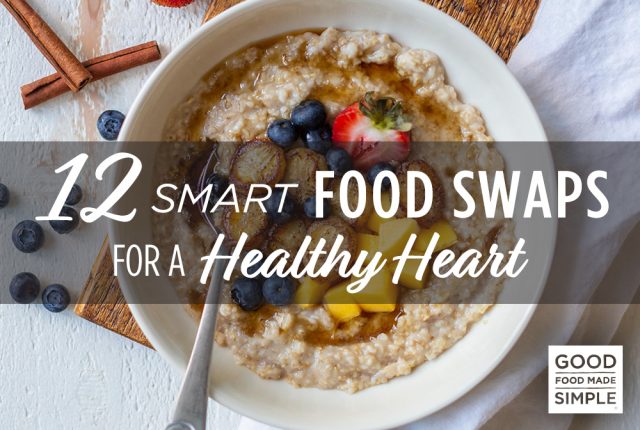
25 Active Date Ideas
While going on dates can certainly be fun, a typical night out with a romantic partner often ends up being focused on eating ...
read more
With the rise in digestive woes and diagnosed digestive disorders, scientists, doctors, and the general public are learning to get more comfortable talking about all things gut related. One of the biggest and buzziest topics regarding gut health these past few years has been probiotics. It seems that this food trend is here to stay. So, let’s take a look into exactly what probiotics are, if they could be of benefit to you, and how you can start to incorporate them into your diet.
First off, it’s important to understand that we all have trillions of bacteria currently residing in our bodies. Most bacteria are living in our large intestines. With today’s trend of recommending everything from our food to our hygiene practices being “clean” you might assume that this gut-bacteria is something we should be wiping out too- not so! These intestinal bacteria help digest our food, produce beneficial byproducts, and protect us against harmful bacteria. We want to keep these good buggies around. Sometimes, due to infection, sickness, travel, stress, or heavy antibiotic use, the scales can tip towards an unhealthy balance of bacteria. This, my friends, is why probiotics are so important.
Probiotics are live microorganisms which, when ingested, extend health benefits to the host. These microorganisms are usually live bacteria, but some can be yeasts or molds. In non-science-y speak: probiotics are “good” bacteria that if you consume them may benefit your health, yippee!
Currently, one of the most studied areas of benefit is probiotics’ ability to reestablish a healthy gut, such as one that may be suffering from chronic diarrhea, slow gut transit, irritable bowel syndrome (IBS), abdominal pain, bloating, or ulcerative colitis. This makes sense because if one of these above digestive tract woes is being caused by a harmful pathogen or compromised digestive tract lining, we would want to introduce beneficial probiotics to help chase out the bad bacteria, reduce inflammation, and produce more beneficial by-products to alleviate the uncomfortable GI symptoms.
Probiotics are also being studied, and recommended in some cases, to be used as an immune-system support for allergies, and for benefits to the reproductive tract, oral cavity, lungs, skin, gut-brain axis, and glucose metabolism.
Going through this list of ailments may have you thinking, “well shoot, maybe I should be taking a probiotics pill, I’ve got issues in at least one of these areas!” But before you go out and pick up any old bottle of capsules from your drug store, it’s important to understand that there are numerous strains of bacteria and not all of them are shown to necessarily be helpful for every issue. Before a stop at the pharmacy, I recommend a stop at the grocery.
I first recommend consuming probiotics through food sources, and the important thing you’ll want to look for is that a product says it contains “live active cultures” on the label. By ingesting the live bacteria they have a better chance of reaching the areas of your gut that need them the most. Some of the common sources of probiotics are fermented foods such as:
Other food sources of good bacteria, but not living cultures, are sourdough bread, beer, wine, chocolate, and soy sauce. Probiotic supplements are certainly a popular area of interest these days, but again their efficacy and specificity lead me to recommend choosing probiotic foods over capsules at this point unless guided by a dietitian or doctor.
Less commonly known, but I feel just as deserving as all the hype, are prebiotics. You can think of prebiotics as the “food” for the good gut bacteria that will go on to benefit the person who consumes them. Prebiotics can help to selectively balance the health-promoting vs. disease-promoting pathogens, and they work especially well in the large intestine. Much like probiotics, once prebiotic foods are fermented in the gut they can help improve IBS symptoms and diarrhea duration. Prebiotics are most commonly found in non-digestible food sources or foods that contain high levels of resistant starch (meaning the starch is not fully broken down into glucose) such as:
Regardless of if you currently suffer from digestive or immune system woes or not, it’s a great idea to build up you intestinal defenses by including probiotic and prebiotic-rich foods in your diet on the regular. If you’re struggling for ideas on how to incorporate some of these funkier foods, here are some ideas to get you started:
—
Article compliments of Casey Seiden MS, RD, CDN, CDE

25 Active Date Ideas
While going on dates can certainly be fun, a typical night out with a romantic partner often ends up being focused on eating ...
read more
12 Smart Food Swaps For A Healthy Heart
February is American Heart Month, and one of the best ways to maintain good heart health is to watch what you eat. Instead of...
read more
Starting the New Year With the ‘Right’ Mindset
With the holiday finally over and the new year upon us, I’d be shocked if you haven’t thought about New Year's Resoluti...
read more